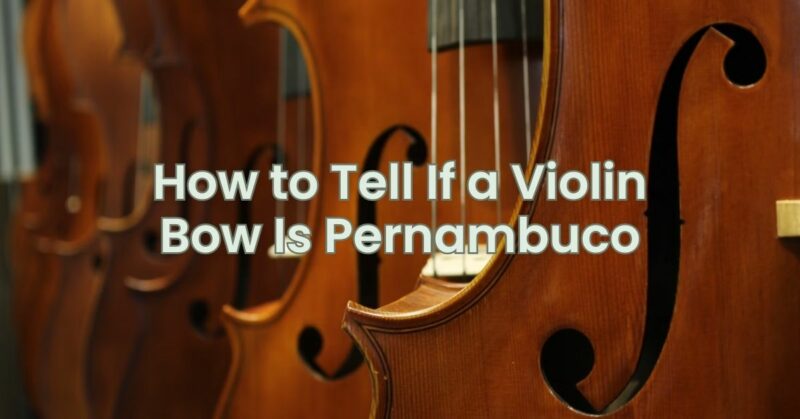Pernambuco wood has long been revered for its exceptional qualities and is highly sought after for the construction of high-quality violin bows. Distinguishing a pernambuco bow from other materials can be a challenging task, especially for those without extensive experience. In this article, we will delve into the characteristics and indicators that can help you identify a pernambuco violin bow, enabling you to make an informed assessment of its authenticity.
- Wood Grain and Color: One of the key visual cues in identifying a pernambuco bow is the wood grain and color. Pernambuco wood typically exhibits a rich, reddish-brown hue, often with darker streaks or grain lines. The wood grain is usually straight, fine, and tightly packed. Carefully inspect the bow, paying close attention to these characteristics, as they can provide valuable clues about its composition.
- Weight and Balance: Pernambuco bows tend to have a balanced weight distribution throughout the bow’s length. When holding the bow, it should feel well-balanced and comfortable in your hand. While weight and balance can vary between individual bows, a pernambuco bow often possesses a noticeable weight and balance consistency that contributes to its overall quality.
- Flexibility and Responsiveness: Pernambuco wood bows are known for their flexibility and responsiveness. Gently flex the bow hair against your hand or forearm, observing how the wood responds. Pernambuco bows should exhibit a certain level of elasticity and resilience, allowing for controlled and nuanced bowing techniques.
- Sound Quality and Projection: When playing with a pernambuco bow, you may notice certain tonal qualities that are characteristic of this wood. Pernambuco bows often produce a warm and rich sound, with a good balance between clarity and depth. Pay attention to the tonal characteristics and projection while playing, as they can provide further insights into the bow’s composition.
- Expert Opinion: If you are uncertain about the authenticity of a violin bow, it is advisable to seek the opinion of a knowledgeable expert, such as a professional violin maker or a luthier. These experts have experience working with various types of bows and can provide valuable insights based on their expertise and trained eye.
- Certification and Documentation: Some pernambuco bows may come with certificates of authenticity or other documentation that verify the wood’s origin. If you are purchasing a bow, inquire about any available documentation to ensure you are acquiring a genuine pernambuco bow.
Conclusion: Identifying a pernambuco violin bow can be challenging, especially for those without extensive experience. However, by closely examining the wood grain, color, weight distribution, flexibility, sound quality, and seeking the opinion of an expert, you can gather valuable information to assess the likelihood of a bow being made from pernambuco wood.
Remember, expertise in identifying bow materials comes with experience and exposure to various bows. If you are uncertain about the authenticity of a bow or wish to make a significant investment, consulting a reputable violin maker or luthier is highly recommended. Their professional insights and expertise will help ensure you acquire an authentic pernambuco bow that enhances your playing experience and allows you to unlock the full potential of your violin.


